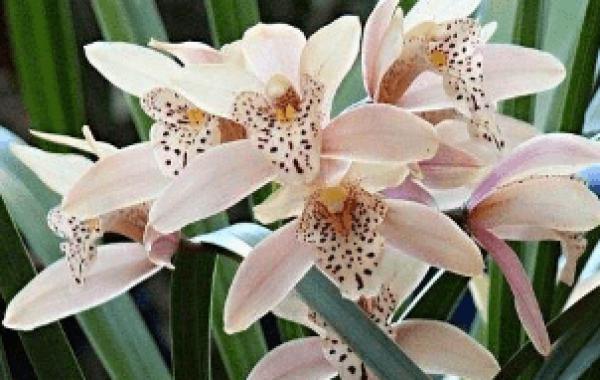What are the reasons for the yellow and fallen leaves of white orchids?
(1) to lose weight for a long time. There is no application of nitrogen fertilizer or no change of water for a long time, and the lack of nitrogen and other nutrient elements in the water leads to thin branches and leaves and thin and yellow leaves. It is necessary to change into new culture water in time and gradually apply rarefied mature liquid fertilizer or compound flower fertilizer.
(2) excessive fertilization. If you fertilize too much, the new leaves will be thick, and the old leaves will be rugged, and the dry tips of the old leaves will fall off. You should immediately stop fertilization, increase the amount of water exchange, make the fertilizer lose, or immediately pour the pot, rinse the bulb root with water and then plant it again into the basin.
(3) hot and high temperature. If the flowers are placed in a high temperature place to let the strong light shine directly, it is very easy to cause the young leaf tip and leaf edge to scorch, or the leaf yellow to fall off. Move to a well-ventilated shady place in time.
(4) excessive shading. If the flowers are kept in shade or in a place with insufficient light for a long time, it will cause the branches and leaves to turn yellow.
(5) soil and water is alkaline. Due to the lack of soluble iron and other elements that can be absorbed by the water, the leaves will gradually turn yellow. Acid soil and water should be selected when planting, and alum and fertilizer water should be often irrigated during the growth period.
(6) whether it is airtight or not. If too much nitrogen fertilizer is applied, the branches and leaves will grow luxuriantly, coupled with the long-term unpruned, resulting in insufficient light in the inner chamber branches and leaves, which is easy to cause the leaves to yellowing and falling off. Reasonable fertilization should be applied and pruning should be strengthened to make it ventilated and transparent.
(7) the air is dry. When the indoor air is too dry, flowers often appear leaf tip dryness or leaf edge scorching and other phenomena. Attention should be paid to water spraying, plastic film cover and other methods to increase air humidity.
(8) improper temperature. When the room temperature is too low in winter, the flowers suffer from cold damage, which leads to the yellowing of the leaves and death in severe cases. If the room temperature is too high, the transpiration of the plant is too high, and the root water and nutrients are in short supply, the leaves will turn yellow. Please pay attention to adjust the room temperature in time.
(9) damage to diseases and insect pests. Leaf spot disease caused by fungi and other bacteria is easy to cause local necrosis of leaves, yellow spots or patches, serious withering and falling off of the whole leaf, yellow-green mottle on the leaves infected by mosaic virus, and damage by shell insects, red spiders and so on.
(10) strong sexual stimulation. The use of excessive concentration of pesticides in the prevention and control of diseases and insect pests, or being polluted by toxic gases in the atmosphere, or suddenly watering cold water when the temperature is high, are easy to cause local yellowing and scorching of the leaf tip or leaf surface, or even the whole plant to die. Therefore, we should pay attention to the rational use of pesticides and try to eliminate air pollution sources. Avoid watering flowers with cold water around noon in midsummer. Finally, it should be mentioned that the yellow leaves of potted flowers are sometimes caused by one reason, but they are often caused by a variety of factors, so a correct diagnosis should be made to prescribe the right medicine to the case.
Related
- Is the orchid suitable for indoor use? Is it good for the body?
- How to prevent the empty root of orchids?
- What to do after the crab claw orchid is withered?
- Why are the leaves of orchids always yellow? Fertilizing and watering.
- Can the root of the gentleman orchid be saved if it is rotten?
- Diagnosis and treatment of cotton-blowing beetle insects in Cymbidium
- There is a way for a gentleman's orchid to rot.
- What is the most suitable temperature and humidity for the orchid?
- How to raise a gentleman's orchid? Cultivation techniques of Cymbidium
- How to prepare the nutritive soil for the cultivation of Cymbidium



